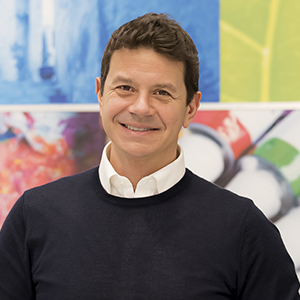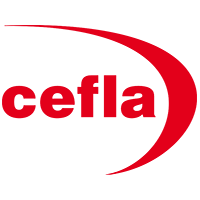
Interview with Piero Pracchi
Finishing Business Unit Director
Innovation for Cefla > BU Finishing > Highlights
What innovation is the Finishing BU carrying forward most successfully?
“Simplification: as market leaders, we’re pursuing simplification of both processes and the product portfolio. To achieve this, it’s essential to focus on the people who actually drive innovation in a coordinated manner and implement business improvement processes.
Real innovation increasingly lies in simplification: if you look at how a patent is conceived, actual innovation is achieved when you succeed in doing the same thing more simply, using fewer elements. Simplifying means reducing complexity, putting your feet firmly on the ground so you can leap forwards to seize new possibilities.
At corporate level, for example, we’ve taken steps to slim down upper management, thus optimising this first organizational level (from 25 managers to a more rational 7 managers in Italy and 7 abroad). Also, to address the raw material procurement crisis, we’ve separated the roles of the person buying and the person ordering. This allows us to obtain better terms of purchase by placing a negotiation specialist in the role of the buyer, consequently lowering costs, and putting a separate professional in charge of production lines. These might seem like small things. However, when you put them all together they make quite a difference, letting you take a step forward towards something that wasn’t there before. In short, you’ve innovated. Better-organised processes, in fact, lead to tangible innovation.
On the product and technology side, for example, we need to consider our customers. We have to focus on their need to monitor the production/economic efficiency of their plants and the quality of the finish, which must be impeccable. To optimise their productivity, we identify bottlenecks in the overall process (e.g. colour changeovers), applying technologies that can halve the number of spray machine tasks.
How can I get ever-improving results?
Our machines feature a sensor system that reduces overspray, ensuring use of the correct amount of coating and recovery of any excess.
This way of analysing a problem has a dual perspective: breaking the problem down into small components and delivering solutions unlike anything proposed so far. The result is that we can use new coating recovery systems in place of traditional ones, allowing its partial re-use and thus reducing annual waste by 30% to 40%.
Our 60 years’ experience helps bring innovation to the world of finishing. This expertise – which is shared throughout our organisation – is unique, making us the most reliable partner on the market, whatever your finishing needs.
To move ahead, though, our company must constantly question everything it’s always done. To do this, we’re aided by a new product marketing concept that explores our customers’ latent needs and interprets what they still ignore as a need, thus giving us a competitive edge. In an industrial Business to Business sector like our own, which has repercussions on design, that process requires careful nurturing.”
How does the market benefit?
“In addition to optimising industrial manufacturing processes, we give some enterprising customers the chance to launch innovations and offer the market something completely new.
A key example: our digital printing solutions let steel coil manufacturers perform on-coil printing at speeds of up to 40 metres per minute, with ultra-high resolution and on lengths of up to 10 kilometres! A solution developed together with one of our customers who sees us a vital innovation partner.
Their production is limited only by their imagination: furniture, wall linings, roofing profiles… and anything else that can be decorated.”
Have we set a market trend with this innovation?
“Yes, we certainly have. In turn, that opens up innumerable other markets, triggering a spiral of solutions that enables further innovations. Ultimately, the trend we’ve set is that of providing the Design sector with a host of unexplored possibilities.
Another innovation, specific to the American market, is the introduction of a concept that streamlines workers’ manual tasks and boosts production process efficiency. This consists of a new ‘catalogue’ sales set-up for our finishing machines: here, the customer benefits from a simple yet complete entry-level process with low investment that yields immediate advantages and significantly shortens ROI times.
Innovation essentially involves building a better process, one that gives the end user synergy and more productivity, yielding considerable satisfaction.”
Is sustainability innovation?
“On the sustainability front we’re driving innovation in the production of IoT sensors for the remote control of machines. Once our machines have been installed, in fact, we’re able to read their every processing cycle and identify any inefficiencies. This info is passed on to the customers, ensuring cost optimisation.
In this case, innovation lies in the fact that customers are informed of inefficiencies in a way that smoothly matches their business practices (e.g. via the company ERP, allowing us to enable preventive maintenance services). What we’re actually talking about is making processes more sustainable and efficient as the machines are running.
Innovation becomes sustainable when you have interconnected machines that provide data which was previously invisible, yielding added value through subscription services.
We see data-driven development as a must because it leads to sustainable innovation in industrial finishing, triggering a chain reaction of further improvement.”


